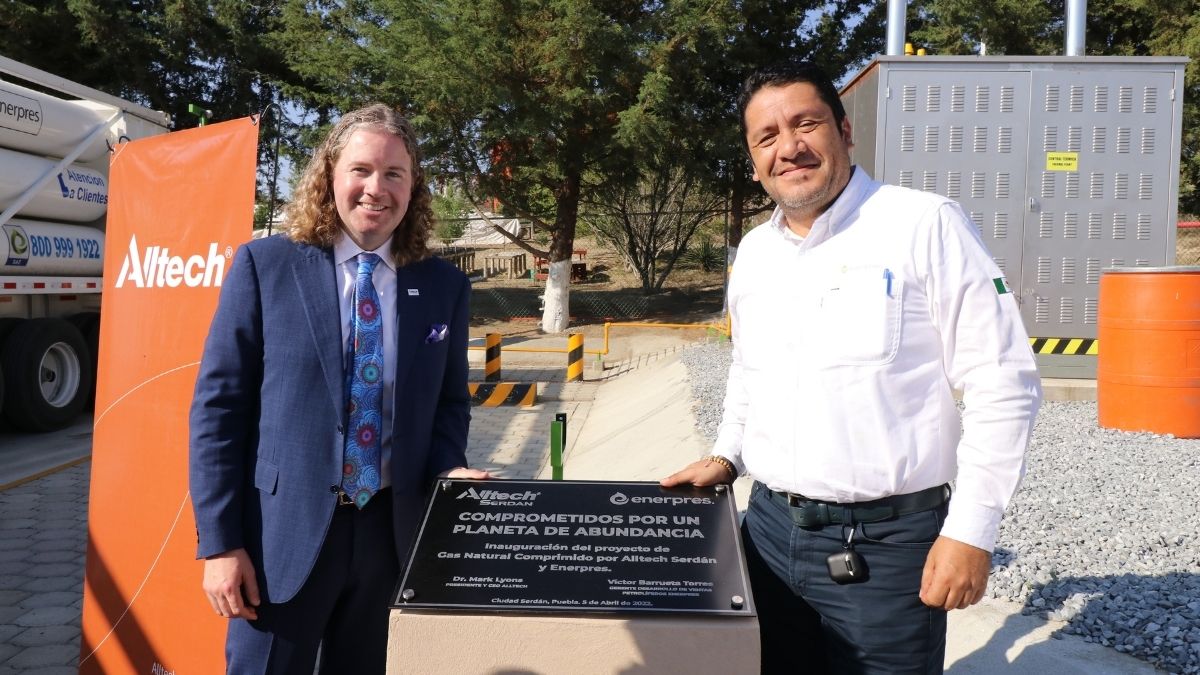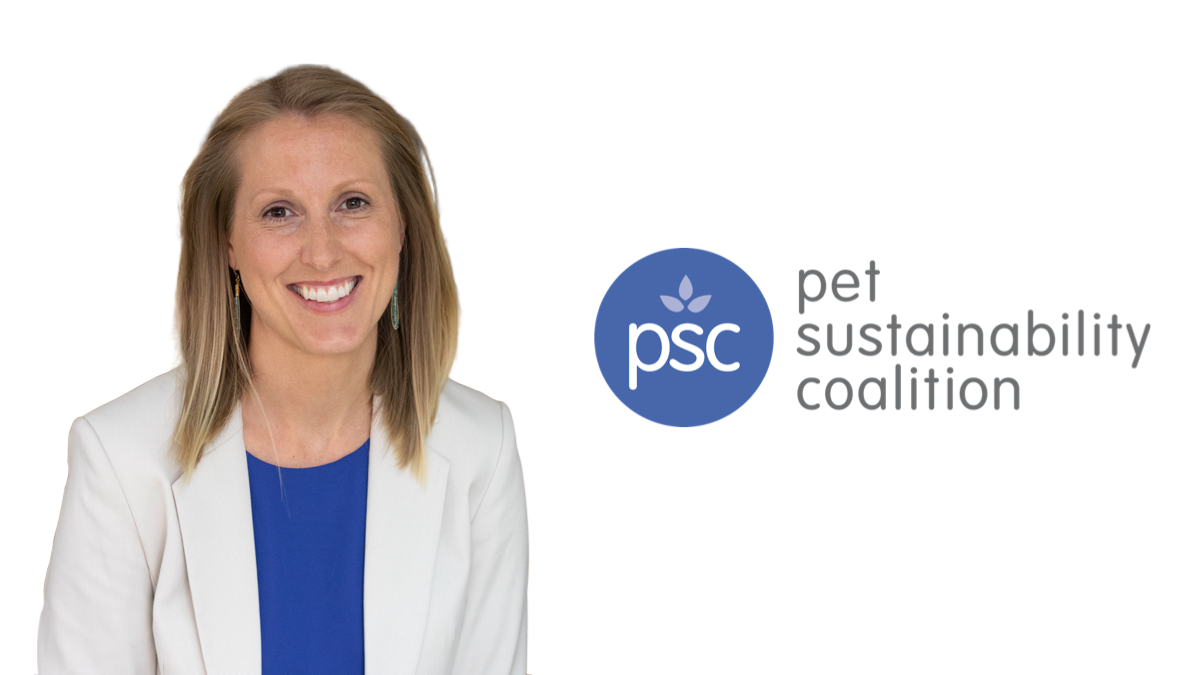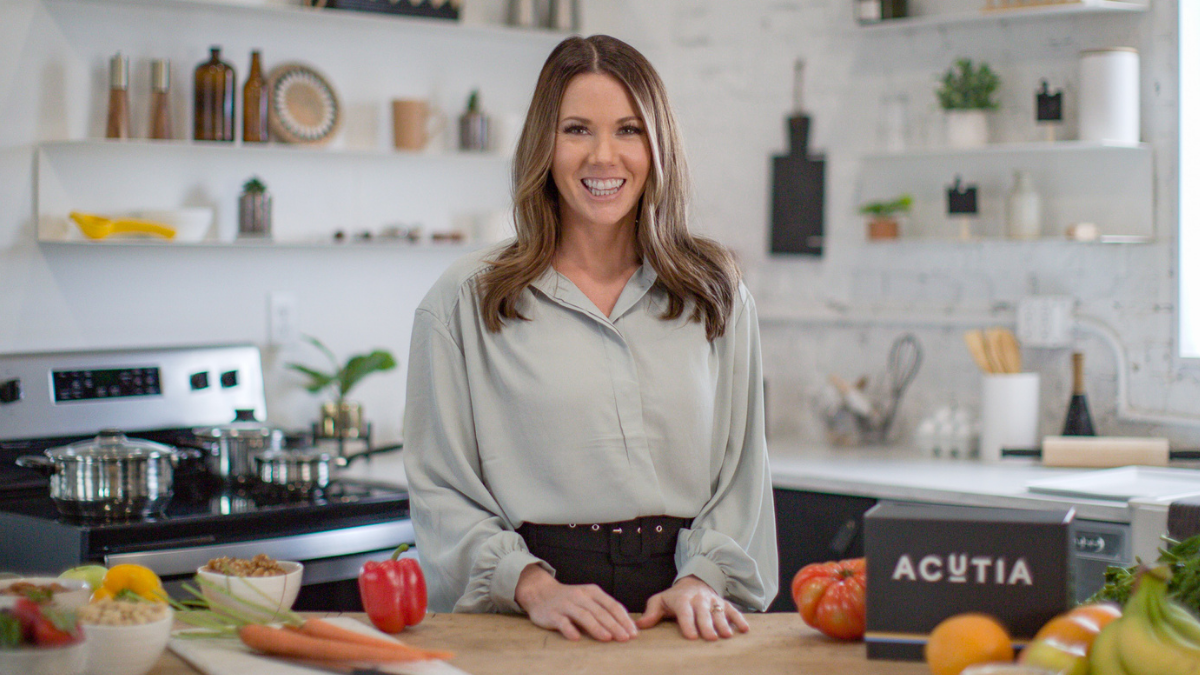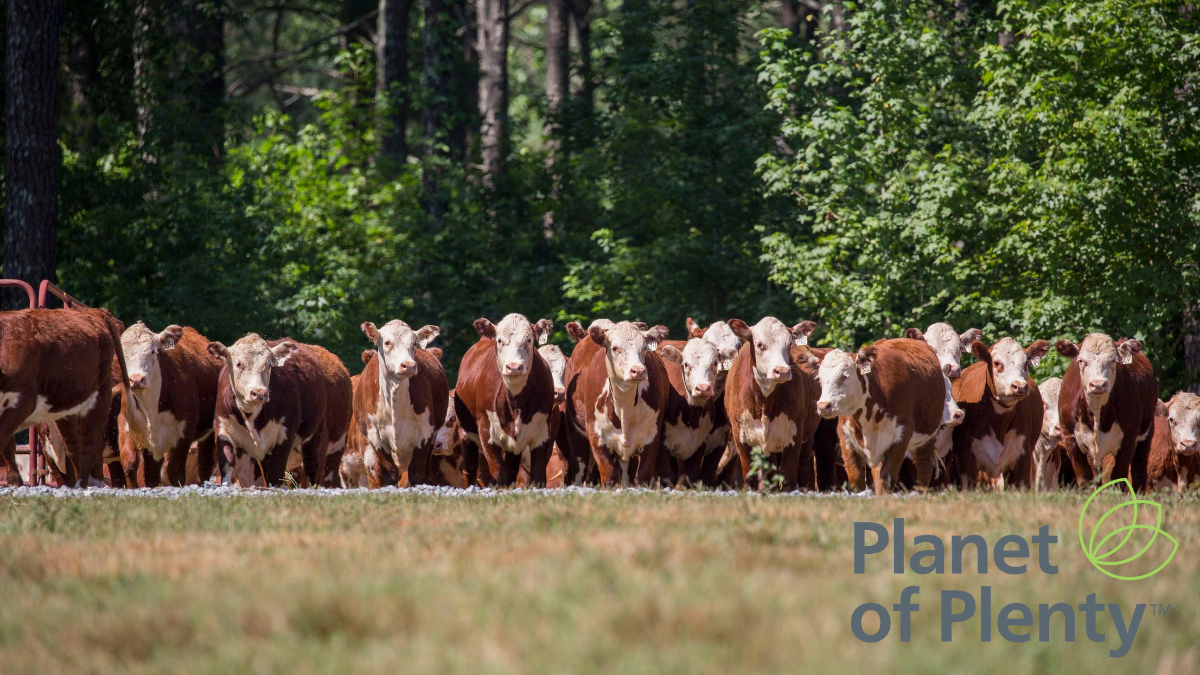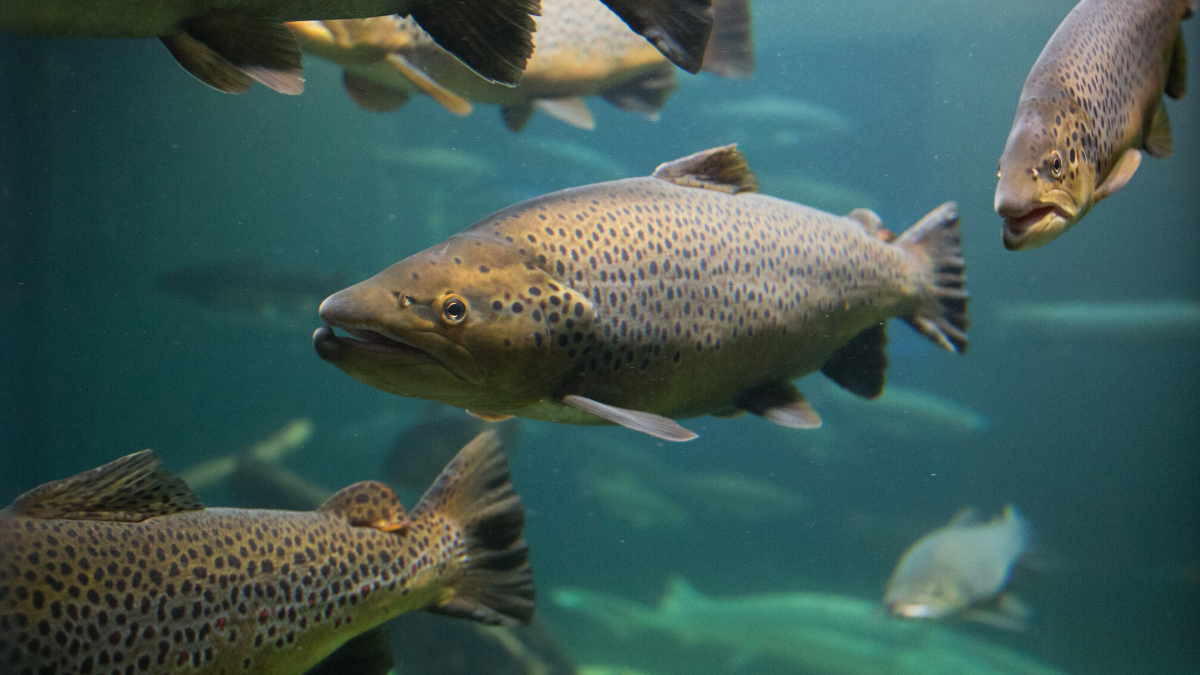The Pet Sustainability Coalition is advancing pet businesses through the integration of environmental and social practices. Caitlyn Dudas, executive director and cofounder of the Pet Sustainability Coalition, joins the Ag Future podcast to discuss the importance of collaboration across the entire supply chain to meet the rising consumer demand for sustainable pet products.
The following is an edited transcript of the Ag Future podcast episode with Nikki Putnam Badding hosted by Tom Martin. Click below to hear the full audio or listen to the episode on Apple Podcasts or Spotify.
Tom: Welcome to Ag Future, presented by Alltech. Join us as we explore the challenges and opportunities facing the global food supply chain and speak with experts working to support a Planet of Plenty.
Armed with a bachelor’s degree in environmental studies and economics from the University of Colorado at Boulder and a master’s in environmental management and sustainability from Harvard, Caitlyn Dudas brings together pet industry leaders to strengthen their businesses while also shaping a future where pets, people and the planet can prosper. Caitlyn is executive director and cofounder of the Pet Sustainability Coalition, and she joins us from Boulder. Welcome, Caitlyn.
Caitlyn: Well, thank you, Tom. Happy to be here.
Tom: And you have an interesting background. I'd like to explore that for a moment, just to give our listeners some context here. And I know that, even as a young teen, you were traveling to struggling parts of the world. You were supporting humanitarian efforts, building schools, teaching sustainable farming methods, delivering hospital supplies, that kind of thing. What led you to that path so early in life?
Caitlyn: Well, Tom, I grew up in the Midwest in a small kind of hobby farm in Northwest Indiana. And both of my parents were very actively involved in progressive social movements. So, I think I learned early to be an active participant — but I also grew up on a farm. So, I had a lot of opportunity, kind of, to explore the natural world and to lead from a place of curiosity as a child. And so, I think the combination of those things — kind of a very strong sense of active engagement and encouragement from both of my parents to participate in a future that's good for everybody — I think the two of those things came together.
And I had the support from my family to really explore the world, and the role that I wanted to play in being a great citizen and a participant, whether that was traveling — you mentioned some of the things that I got the amazing pleasure to work on in Central America or in my local community. I was very interested in just learning and seeing what was out there. And I think, when you're exposed and see different places around the world and you see a different plate than the privilege, I think, that we often have here in the United States, any person would be hard-pressed not to want to be a part of the solution and to make people’s lives better.
Tom: I know it's difficult to reach back over a lifetime of experience, like what you just described, and unpack it, but if you had to, what would you say you've learned from those experiences that informs what you do today?
Caitlyn: One of the things that I did — for example, in college, I traveled to the Amazonian region of Brazil, in the northern region, in a town named Belém, which is at the mouth of the Amazon River, and I explored and spent time living in very remote villages with people who didn't have access to basic things, like groceries and a store. And they really lived off of the land.
And this is an example of an experience where — I knew that there was a turtle species that lived in the region that ecological organizations have decided was a high-value species. And so, they wanted to protect it. And what they did is they basically decided they were going assess fines on anyone (who) killed one of these river turtles. And when I actually got the chance to go into Brazil and to live in these villages, (I eventually came) to understand that this same turtle was basically what many of the tribes used as an opportunity to trade in the marketplace. And so, what they brought was this river turtle to market, and then they traded it for other goods and services.
And so, I started to understand a little bit about the differences between rules and regulations and the impact that they have on real people and real environments. And I started to understand that there are tradeoffs in environmental policy and in sustainability, but there are very few silver bullets where there's a solution out there that doesn't have a ripple effect or other impacts on — whether it's people or other environment.
And so, I think, in that way, one of the pieces I took away from some of these environmental or adventurous experiences (that I had) when I was younger is the complexity of the world that we live in and what that means about developing our problems and how we go about all the problems in our natural world. And to understand that the environment and humans are linked; you know, they do not exist outside of one another. And so, while many people may think of governmental issues as separate from human or community issues, really, we're all on the same planet. And through marketplaces, or through trading, or through food or shelter, it is impossible to separate the two entirely.
So, through those experiences, (I got a better) understanding of how interwoven our communities are, the natural world, and also how complex it can be to make systematic laws and regulations and changes that work for everybody involved.
Tom: Human conceit has always interested me — how we somehow imagine that we're not part of the natural world. It's interesting, isn't it?
Caitlyn: Yeah. You know, the way that we live is very disconnected from our natural world. We don't see where our food and water comes from; we don't see where it goes when it leaves our house. And so, I think, over time, in the process of living in a privileged place, we leave our connection to these things. After college, for example, I spent several summers taking high school students into our backcountry of different natural areas around the United States — all over the place, from Alaska to New Mexico to Texas — and really reconnecting them with the environment and remembering how closely connected we are. So, yes, I would agree. We are all connected, from the planet we live on, where our food comes from, and how much we really rely on the earth for our well-being.
Tom: Well, Caitlyn, let's talk about the organization that you now lead. How did the Pet Sustainability Coalition come about?
Caitlyn: Sure. So, I am a cofounder. So, Chris Bentley, who was a cofounder of Aspen Pet Products, which was a large manufacturer of dog toys and hard goods, was living here in Boulder. And I had just moved here after I finished my degree from Harvard in environmental management and sustainability. And I had joined a small nonprofit consulting company just outside of Boulder. And Chris had spent some time looking for an organization to build him a suite of tools where business could really kind of get on their path for sustainability, start measuring their impact and building plans for improvement.
Now, Chris Bentley, having kind of lived in Colorado for a long time, also has a very strong passion around sustainability and the environment. And he considered (the question), where did he, as a person, have the most leverage, right? So, where were his biggest opportunities to really make an impact? And he recognized, after spending 25 years in the pet industry, that his biggest lever for change was, really, as a successful businessperson. And so, with a very strong goal to use that position to really bring sustainability to the pet industry, he recognized early on in our work together that I have the skillset to be his implementation partner.
So, he really brought this vision, which we developed in partnership. You know, we looked at other industries — like the apparel industry and the natural food sector — to understand what they were doing around sustainability. We used them as a model to understand how we could effectively work with businesses, which really can have a much wider impact across all their stakeholder groups than individuals working on their own. And so, he and I together, we studied those separate industries, and then — he really had been working for years before we met to really understand the need of the audience. So, he would meet with CEOs and execs in the industry and say, “Hey, what are you doing around sustainability?” And (he was) really cataloguing, over years of these meetings, what they were doing, what they expressed needing help with and support with, and then (he began) working with me to build a model around a nonprofit that could deliver on that need and start to work with his community of executives that were ready to take action.
So, together, he and I built the concept for the Pet Sustainability Coalition. And we pitched it to a group of about 15 to 20 different companies at one of the industry's largest trade shows in 2013. And out of that meeting, eight companies wrote a check for $10,000, and that became the seed money from which we started developing the Pet Sustainability Coalition. And then I was hired as the executive director to implement the vision that he and I continued to create. In addition, we expanded to adopt a formal board. And so, that board, along with Chris and myself, have really been the visionaries and the people responsible for, at the end of the day, turning that vision into an action plan.
Tom: Well, what would you say is the overarching mission of the coalition?
Caitlyn: So, our mission here at PSC is to advance pet businesses through the integration of environmental and social practices. That mission is really (working) toward a vision where the pet industry is not only doing less harm, but we're actually actively participating in building better communities and improving the environment in all the places around the world where we do business.
Tom: How many companies belong to the coalition?
Caitlyn: So, today, we're about 200 companies strong, and we have representation from the entire supply chain. So, we have retail members; we have distributor members. We also work with manufacturers, brands, producers and suppliers.
So, all the way through the supply chain, companies come and they work with us. And really, we have a basic three-step model. So, they measure their impact. We are in alignment with the Sustainable Development Goals developed in partnership with the UN Global Compact and the nonprofit B Lab. We help companies measure and benchmark where they are today, and then we develop improvement plans.
So, it’s a very customized process to understand what objectives look like for every different business. For some companies, that might mean building or, ultimately, engaging and attracting and retaining top talent. You know, having a strong workforce is a real challenge for businesses today, and many people want to be participating with purpose-driven businesses that are (about) more than profit. They're really thinking about, “What is our place in the world, and how are we participating in a better future?” And so, other companies may be looking at cost savings and efficiency improvements. So, that might mean reviewing their warehouse, looking at things like alternative energy or where's their waste and their footprint. So, we work on a variety.
Sustainability can mean so many different things to so many different people. That is really a custom process for most of our member companies to really identify what their objectives are, what is their priority, or what the return to their business will be from investing in a sustainability program — and then, when they’re measuring and improving, really working on celebrating those accomplishments.
Sustainability is a commitment to continuous improvement. At the end of the day, you don’t get to check a box that says, “Hey, I completed sustainability off my checklist today.” And since we’re continually improving — and every year, there's new technology out in the marketplace — we really think it's important for companies to celebrate those accomplishments and those milestones that they're taking as their impact continues to improve. So, our member companies are measuring. They’re building that improvement plan and then celebrating their accomplishments all along the way.
Tom: Caitlyn, under the “About” tab on your website are some core values, and they include a couple that I would like to bring into focus here. First, authenticity. Tell us about that.
Caitlyn: Yeah. So, “sustainability” has become a buzzword for so many industries and companies. And really, when you're in a place of shifting the market — so initially, businesses, their sole intention and purpose was to drive profitability to shareholders. And as that definition has expanded to today’s modern world, where businesses are really meant to drive value to stakeholders instead of shareholders and (are) really considering their impact on a much wider audience, not just to those shareholders, there have been a lot of different interpretations of what that might look like for different companies.
And so, authenticity and the core value is really — at the end of the day, as an organization, we measure whether or not we're successful as to what? The actual science-based outcomes, right? So, are environments actually being improved by the work that we’re doing with our member companies? And at the same time, are communities actually being improved? So, what we do is we really think about, “How do we measure that?” So, we are continually aggregating data from our member companies, and we’re able to show a really interesting, authentic picture around different environmental and social metrics that actually lead to a better world.
So, we’re an organization that says, “Hey, you know, our mission is to advance the pet industry and to be a positive contributor the environment and communities. How do we measure that?” So, (those are) just a few interesting pieces. If you look, for example at alternative energy use in our member companies between 2016, say, and 2019, we can see a sharp increase in the number of our members that are using alternative energy. And on the social side, let’s say if you look at gender diversity, our member companies have a much higher percentage of gender diversity, of women in leadership, management and executive roles, than the average business as well.
So, authenticity and transparency is another one of our core values. It’s really ensuring that every program that we invest our member dollars in is delivering a return to that core mission.
Tom: I see that another of your core values is about focusing on implementation. What does that mean?
Caitlyn: Yes. Absolutely. So, for example, if I said that our member companies came to us and they measured, and then we developed improvements, and that was the end of the services and tools that we deliver to them, that would be the opposite of an implementation focus.
So, we are an action-oriented organization. An example of this is all of our memberships: We take 20% of that membership fee and we hold it aside in what we call a project credit. Now, that project credit can be used for a company to take action to complete a project or take a step that shows a measurable improvement, again, to, kind of, their baseline performance today on how they impact the environment and communities. So, that's one example of how we integrate opportunities for companies to take real action through their membership. So, that’s that kind of action orientation.
I think also we’re in an environment — sustainability, in general, isn’t a place that has a lot of truths. There’s lots of case studies out there. And at this point, there are more than 500 peer-reviewed studies that show (that) sustainability drives long-term profitability for a business. But for a lot of what we do, there's no rulebook. There's no guide to how to run a coalition or how to advance an industry and sustainability. And so, when we talk about being implementation-focused, it means that, oftentimes, we’re pioneers. We’re out in the front of different issues that are coming to the industry, and we're really helping to spearhead new initiatives that have never been done before, instead of waiting to allow other actions to take place before we may decide, “Hey, this is improving. So now, we’re going to go ahead and give it a try.”
I think an example of that might be some of our packaging work. So, we piloted a takeback program for all types of flexible bags that are used for pet foods and treats in about 120 different retail locations last year. Never before had the pet industry come together to collect this hard-to-recycle material. There had not been extensive testing done on the 300-million-pound packaging footprint that we have today that’s currently going to landfill. I’m not going to give you an example of how our organization has really kind of pioneered through action and different solutions to some of the environmental problems that we face.
Tom: What would you say are some leading issues that, in your view, Caitlyn, must be addressed and overcome by the pet industry to achieve meaningful sustainability?
Caitlyn: Yeah. So, as an organization, in 2018, we had about 80 member companies at that time. And we had an interesting shift in kind of an extension of our mission overall. You know, we had those 10 companies we started with, and we grew to 50, then we grew to 80. And what happened uniquely is that we suddenly had representation from the entire supply chain. I mentioned all of the different types of members that we have. And that put us in a new position. It put us in a position to understand and to start addressing areas of sustainability that are too big for a single company to form on their own.
And at that time, we really started to look at: What are those areas of sustainability that really need leadership? They need thought leadership, they need experts, they need education, and then they need actionable ways for companies to come together as individuals, but in a way that aggregates their impact so that we can address these larger-scale issues working together as an industry overall.
So, the three key topics of sustainability that we selected based on their ability to drive scalable impact — the first one is sustainable packaging. So, thinking about this big movement that’s happening across all industries and all sectors — it’s really looking at the impact of plastics in our environment. You probably know that there's been estimated to be more plastic in the ocean than fish by 2050, and (we’re) looking at, “What’s the footprint of our industry, and how do we start to advance solutions for the entire industry we participate in?”
So that’s one piece. The second piece is around sustainable ingredient sourcing. So, the pet industry — obviously, you know, two primary categories (we’re) looking at are food and treats and then, on the other side, textiles and hard goods. Particularly in the consumables section of our industry, the food and the treats that we’re developing, about 25%, on the low end, it has been estimated, from all of the proteins that are grown and raised in the United States, eventually goes to pets.
And so, we recognize this enormous opportunity to say, “Hey, if we’re at 25% participants, we have a big opportunity to start to evaluate: What is sustainability and the transparency and traceability of the ingredients that we use in this industry, and how can that be an opportunity for us to drive further impact and to participate in a bigger movement that's happening in the agricultural sector overall, toward more sustainable soil treatment and farming methodology and ingredient sourcing and formulation, so that we can be an active participant in the change that needs to happen to protect our environmental resources?”
And then, finally, in 2019, we also took a look at social sustainability and equity, an equitable system. And we added diversity, equity and inclusion as a component, or kind of one of those large keystone initiatives that we wanted to start leading the way in as an organization. So, (we’re) looking at: What’s the overall status today around diversity in our industry? Is it equitable? So, is it serving all communities? And whether that’s the equitability of our farming practices to the diversity of professionals in our industry to meeting the needs of pet owners of different backgrounds as well.
And so, those are the three key issues that we also help to address overall as an organization, kind of beyond helping every single member company improve, but also taking a look at those larger issues, including sustainable sourcing, sustainable packaging, and diversity, equity and inclusion.
Tom: From your perspective as somebody who's keeping close watch on the pet industry, how could you assess the industry's movement toward sustainability?
Caitlyn: Yeah. So, there have been some key milestones that I think have served to progress the industry more quickly at different times. So, in 2016, millennials became the largest pet-owning generation. And it took a couple of years for, I think, the pet industry to really grapple with that intersection between millennials and sustainability. And it turns out, millennials care more deeply about the environment and communities than any other generation. But also, importantly, they're the first generation that’s willing to pay more for sustainable products.
And so, I saw a very large shift between 2016 and 2018 in terms of an understanding of the demand for sustainability from consumers and, as a CPG[ET1] industry, starting to really think about, “What is our responsibility and, really, our opportunity to meet those customers in that more kind of values-aligned way?” And so, there was a big shift in 2018. So, in 2018, as an organization, if we’re a reflection of the demand and adoption for availability, we have seen, as an organization, we've doubled in size every year since about 2018. And so, that’s really where we started to see that uptick, as pet businesses started to recognize this demand and opportunity for sustainability.
Then, I would say in 2019–2020, there was also another big shift that we thought was primarily around sustainable packaging and collaboration. So, every year, we do a survey of our members in the industry. And early on, we recognized that there was a lot of fear in the industry around collaboration or collaborative models, around sharing information with other peers and competitors or brands of similar types and sizes. And everyone wanted to kind of work on their sustainability internally. We still do, but (we) have strict NDAs with many companies. They were not interested in developing case studies or sharing what they're working on.
And there’s been a big shift in, (A), the desire to communicate externally around sustainability goals. So, I think, as we have seen expectations around accountability and reporting to wider reporting groups, there has been an interest in companies to really be seen as leaders and to share more information on their successes and challenges and data-driven goals and reporting. So, that's a big shift that we’ve seen. And I think, any time (there is) an industry where peers start kind of openly reporting on their sustainability, we see an acceleration in (the) adoption of sustainable practices, because it starts to become a minimum expectation to do business in the pet industry.
So, I think there was a big shift there. And then, you know, one of (the) big areas, sustainable packaging, has been able to really push forward solutions. I can recall, in 2018, reaching out to a group of pet packaging suppliers and saying, “Hey, you know, there's 25 different solutions that are being pushed in the market today around sustainable packaging. We don't think that's healthy, and it's not creating a unified pathway to arrive at solutions faster.” So, we were able to kind of move from 25 down to five. We’re now getting down to about three. You know, we have seen an incredible acceleration of pace around sustainable packaging solution just in the last two years as well.
Tom: Well, for anybody listening who's considering career paths right now, what's your pitch to them for a life working to advance sustainability in the pet industry?
Caitlyn: Yeah. You know, I think sustainability is an incredible space to build a career in. It is creative because, like I was mentioning before, you know, there's not a roadmap already built. There's no guidebook. And so, for people who like developing something from nothing, it is a very creative space in which you get to iterate new ideas and test them and pilot them in different industries or different, kind of, smaller businesses.
I think, also, businesses are an incredible engine for driving change, right? If you think about the scope from which a business works — whether it's working with all of their employees, which could be hundreds of thousands of people; or all of the natural resources they use, which could impact environments around the world; or all of the markets that they play a role in — again, this industry is very strong here in the U.S. but also in Asia, in South America and in Europe.
And so, I find it to be a particularly impactful way to use my career in order to drive the world forward, to harness the power of business to do good in the world while, at the same time, working in a very creative space that’s impact-driven, that’s purpose-aligned, that attracts other purpose-driven individuals that are generally just a fun and vibrant and very inspired group to work alongside, who is — they’re all so invested in each other's successes. And so, it’s a very collaborative space to have a career in.
And then, not thinking about the pet industry — you know, I had no sense that I would have a career in the pet industry. I knew I wanted to do impactful work that made the world a better place, and I can't say that I had, before doing this, squarely said that I would be in the business sector. And so, you know, the pet industry is the right industry for really bringing together multiple stakeholders, because its core consumers — whether that’s pet or pet parents — naturally have a strong caring bone in their body. This is an industry that attracts very caring people, and care, care starts with care for yourself and then care for your family, and then your family includes pets. And I'm pretty sure, pretty soon, you know, that starts its ripple effect as well, so then you start to care about your dog park, and you care about the other people at your dog park in your community and then your town and your environment, and then the U.S., and then the world, and then animals that live other places. And so, the pet industry is a unique, playful, caring industry from which to really grow this idea and movement around sustainability.
Tom: All right. That’s Caitlyn Dudas, executive director and co-founder of the Pet Sustainability Coalition, with us from Boulder. Thank you so much, Caitlyn.
Caitlyn: Thank you, Tom.
Tom: You bet. And for Ag Future, I’m Tom Martin. Thanks for listening. This has been Ag Future, presented by Alltech. Thank you for joining us. Be sure to subscribe to Ag Future wherever you listen to podcasts.














